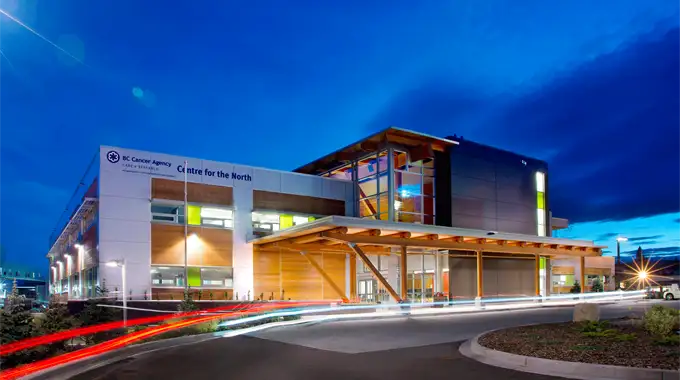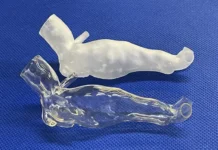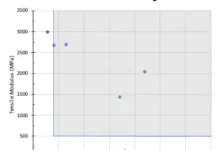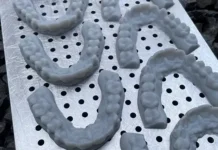By Liz Stevens, writer, UV+EB Technology
At BC Cancer – Prince George (Centre for the North), in Prince George, BC, Canada, researchers are conducting a comparison study of two additive manufacturing methods for creating the boli used during radiation treatments. If a patient needs treatment for cancer that is near the surface of the skin, it often is necessary to fabricate an anatomically customized, form-fitting bolus – a tissue-replacement mass – that is placed on the patient to optimize how the radiation plane strikes and penetrates the target area. Historically, materials such as plastic, silicone and wax, or commercial replacement tissue, have been used. With these methods, however, achieving a custom fit with an optimal shape has been problematic, time-consuming and can yield boli that are difficult to sterilize.
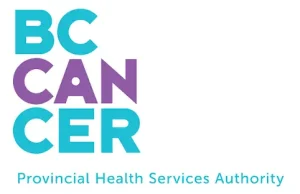 In their study, BC Cancer researchers are comparing fused deposition modeling (FDM) and masked stereolithography (MSLA) to see which method/technology/material combination will produce the best boli in an efficient, affordable and manageable way. UV+EB Technology talked with Nathan Smela, radiation therapy service technologist, to learn about BC Cancer’s study, which earned a RadTech 2022 RadLaunch Award.
In their study, BC Cancer researchers are comparing fused deposition modeling (FDM) and masked stereolithography (MSLA) to see which method/technology/material combination will produce the best boli in an efficient, affordable and manageable way. UV+EB Technology talked with Nathan Smela, radiation therapy service technologist, to learn about BC Cancer’s study, which earned a RadTech 2022 RadLaunch Award.
For either FDM or MSLA production of a bolus, the beginning steps are the same. “A CT scan is taken when a patient is first admitted,” said Smela. “We then plan a radiotherapy treatment in our treatment planning software. The specs for the bolus automatically are generated and prescribed in that software. We extract the bolus prescription and convert the 3D mesh object that it describes into a STL file (the file format for 3D printing) and use another application to smooth the mesh.”
For the printing step, said Smela, the group already had experience with FDM 3D printing. “But while BC Cancer – Prince George has been successfully using FDM printing on an open-air bed with polylactic acid (PLA) filament to produce a better bolus than legacy methods,” he said, “a drawback of FDM it that it requires a considerable amount of labor and skill.” The various consumer-grade FDM printers that Smela et al have used have a steep learning curve. “Operating and maintaining a FDM printer require significant training,” said Smela. Operators must learn to calibrate filament rolls and do this for each and every roll, which requires temperature towers and stringing tests.
“The user also needs to ensure a consistent first layer,” he continued, “and must avoid filament loading issues, watch for temperature probe issues and check for needed maintenance on belts and bearings.” And all of this, Smela emphasized, doesn’t include the important tests needed to finetune an FDM printer to its full potential, like calibrating pressure advance, extrusion width tests, testing for acceleration/jerk settings or performing updates to the firmware and slicing software.
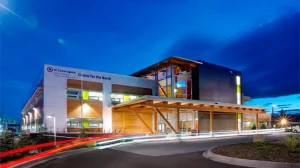
Ultraviolet (405 nm) MSLA printers that work with a vat of liquid material are easier to understand and operate than a FDM printer, according to Smela. They also can offer about twice the print speed of an FDM printer and can be used to create a bolus that is easier to clean and sterilize for radiation therapy patients.
“FDM’s printing speed is volumetric,” Smela added, “meaning that if you double the number of objects to be produced during a single print run, you at least double the print time. With MSLA, the print time is based only on the longest dimension of any or all objects, regardless of the cubic volume of the object or multiple objects.” In this case, two objects can be printed in the same time as one object, shaving off valuable print time that Smela can use for making test prints to find the best orientation for printing a bolus.
For this study, Smela is comparing two consumer-grade 3D printers, a $1,200 (CAD) consumer FDM printer vs. a $1,600 (CAD) consumer MSLA printer. While the costs of the printers themselves and their parts/maintenance consumables are comparable, MSLA-printed objects require more post-processing (wash and cure, and sterilization), which calls for additional hardware.
The ability to easily disinfect or sterilize a bolus is important since cancer therapy patients may have compromised immune systems or may have communicable illnesses. FDM printing of boli is far from ideal, hygienically-speaking. The process takes place in open air, and an object made from heated filament is a great host environment for pathogens.
“In order to print quickly on a FDM printer,” said Smela, “we have to use large layer heights, but this leaves big cavities for microorganisms to thrive in. There also are tiny gaps internally in an FDM-produced object – more places for microorganisms to colonize.” To address this problem, Smela wraps each bolus in plastic wrap and routinely cleans it with disinfectant. “An MSLA-produced resin bolus, on the other hand,” Smela said, “can be printed with a smaller layer height. It also should have a completely filled interior, making disinfection faster and easier. And with MSLA printing, there also are sterilizable resin options.”
Using 3D printing for medical use calls for careful attention to the type of filament or resin used. “The best patient bolus material,” said Smela, “would be biocompatible, easy to print, nearly equivalent to water for radiation occlusion, have no odor, be antiviral/antibacterial or sterilizable, and be inexpensive. A super-soft material would be ideal – with a shore hardness in the 00 or 000 range – but the peeling forces of the MSLA process would make material that soft exceptionally difficult to handle and therefore is out of scope for this project.” For FDM printing, PLA (polylactic acid) filament was used. Comparable biocompatible, rigid consumer-grade MSLA resin roughly is triple the cost of FDM filament, and this introduces another data point – material cost – to evaluate during the study.
Cost of materials, as well as cost of hardware and software, always is an important factor to consider when choosing between methods and technologies but, for BC Cancer – Prince George and this study, economy carried special weight. “We are operating on a very tight budget,” Smela said. “The members involved with the study volunteer their time to ensure that we have enough budget to fully test FDM vs. MSLA printing.” That leads the group to be creative with its MSLA post-processing equipment because the preferred cleaning and curing system is beyond the study’s budget. To make do, Smela is using an ultrasonic cleaner and a UV LED lamp with a solar-powered turn table.
Smela hopes this study will empower innovation in radiation treatment. “We would like to see this study guide and justify the use of UV polymers in radiation treatment at the clinical level,” he said. “We would like to show that a 3D printer could pay for itself for a single purpose, knowing that success in a first use will spur people to consider what else can be achieved with 3D printing.”
The group looks forward to seeing this technology grow beyond merely being an intriguing technology, to becoming a multi-purpose tool in search of the next problem to solve. “Given these printers’ relatively low cost,” said Smela, “we hope to show that they are easy enough to use, thus encouraging other treatment centers to try out the process themselves.”
RadTech applauds BC Cancer’s exploration and evaluation of FDM and MSLA 3D printing, where the features and benefits of UV can play a part in improving radiation treatment for cancer patients.



